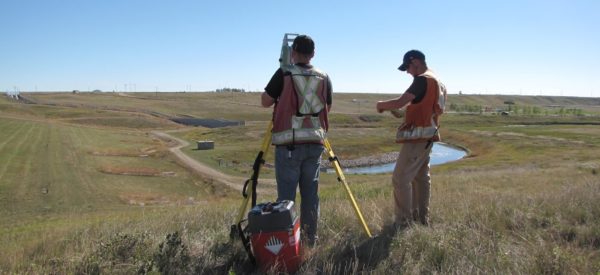Health and Safety Training: Onboarding New Employees
Challenger’s fieldwork takes our employees all over the province and territories to a large variety of different work locations, including:
- multi-story urban construction sites
- remote well sites and pipelines
- surface or underground mines
- high-traffic roads, railways and airports
Each site that we work on has its own unique hazards and conditions that are often not the same from one day to the next. Our field crews are required to make adjustments to these changes and all types of weather, including extreme cold and deep snow in winter, to sweltering heat and thunderstorms in summer.
Safety is critical to Challenger’s success which is why we place a huge emphasis on making sure all of our employees are properly trained and prepared each day so they can complete tasks safely on every project work site.
Our commitment to safety starts on day one for new employees, who go through a comprehensive safety orientation that is led by one of Challenger’s corporate safety advisors. During orientation, employees are introduced to important elements of our safety program, like emergency preparedness, the right and responsibility to refuse unsafe work, vehicle and equipment inspections, and our safe work practices and safe job procedures.
Employees also go through full WHMIS training, taking a company-designed course that covers everything they would need to know regarding safe handling, use and storage of hazardous products they may encounter at work.
Field employees will also attend various external training courses before they’re ready to start work. Many of our staff are trained in:
- First Aid & CPR
- Construction Safety Training
- H2S Alive
- Ground Disturbance
- Confined Space
- Fall Protection
- Wildlife Awareness
- ATV & Snowmobile training
- Transportation of Dangerous Goods
When employees are deemed ready to start fieldwork, they’re paired with an experienced surveyor who can mentor them and ensure that Challenger’s operating methods, procedures and overall safety culture is properly demonstrated.
One of the key elements of our safety program is hazard identification and control. When field crews start work, the first task of the day is to hold a ‘tailgate meeting’ to discuss and plan how to complete work safely. This is then documented on our FLHA (Field Level Hazard Assessment) form, which is later digitally submitted to project managers and safety advisors for their review.
The hazards we face in our work range from wildlife encounters to the dangers associated with riding ATVs and snowmobiles over rough terrain, working in confined spaces, and surveying along a busy highway or bridge deck.
Each member of our team is expected to take an active role in mitigating any known hazards and contributing to Challenger’s culture that strives for zero incidents on the job.
We regularly undergo outside audits to ensure that we are achieving our internal safety objectives. This summer, after multiple interviews and site visits, we were very happy to have scored 96% on our 2019 external COR audit for Alberta. These audit results show that we are making excellent progress, but we can’t afford to be complacent. The training and resources we make available to our staff are a big part of our success, but we must continue to be vigilant in our safety practices.

